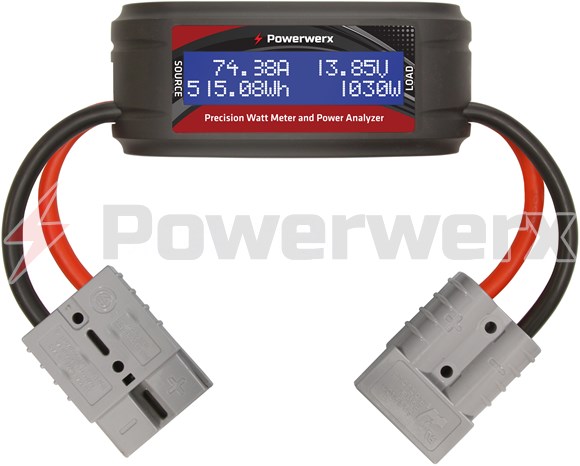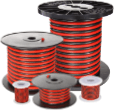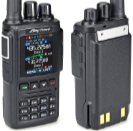
Powerwerx Watt Meter Plus, DC Inline Power Analyzer, 75A Continuous, 8 Gauge, SB50 Powerpole Connectors
- $76.99
- In Stock
- SKU: WMPlus-SB50
Customer Reviews
Great Meter By Bradley
This is a great meter. At 75 amps continuous and 140 amps peak. Since all my connections us SB50 or SB75 amps this is basically plug and play. The ability to capture peak amperage is very useful. The meters on my VS-70 AP power supply just aren’t fast enough catch peaks.
The following are two suggestions for making this unit better.
1. The leads are a tad too short (2 3/4 inch from housing to SB50). A total length of 6 inches would be perfect.
2. Mounting issue: Unfortunately there isn’t a screw/bolt hold to mount the device and doesn’t appear there’s a place to add one. A bracket of some kind that the meter could snap into would be perfect. Unfortunately the only solution is to use either double stick tape or a Velcro fastener like found on your EZ-Pass. Otherwise the unit just lays on the surface basically flat which makes reading it difficult at best….because the leads are so short (2 3/4 inch from housing to back of SB50) to the SB50 connector mounting is made more difficult because the meter wants to twist to accommodate the SB50 connectors. I’ve taken the unit apart and could make the leads longer using the same type 8 gauge silicon wire used in this product. I understand the reason for keeping the leads short to maintain the 75 amps continuous and 140 peak…all of which is a moot point if the leads coming from the source to the load are too long or the gauge wire is insufficient to carry that kind of amperage. In addition I wouldn’t want to run the max rated 120amps through a SB50 connector…8 gauge wire is rated at 125-150 amps at 13.8 volts 0-4 foot. Replacing the wire isn’t for the faint of heart. It will take a temperature controlled soldering iron at about 750-800 degrees with a medium sized chisel tip and pre-tinning the replacement wire. Since my power supply is only rated at 70 amps ICS the SB50 and 8 guage wire work fine.
Brad
South of Pittsburg
The following are two suggestions for making this unit better.
1. The leads are a tad too short (2 3/4 inch from housing to SB50). A total length of 6 inches would be perfect.
2. Mounting issue: Unfortunately there isn’t a screw/bolt hold to mount the device and doesn’t appear there’s a place to add one. A bracket of some kind that the meter could snap into would be perfect. Unfortunately the only solution is to use either double stick tape or a Velcro fastener like found on your EZ-Pass. Otherwise the unit just lays on the surface basically flat which makes reading it difficult at best….because the leads are so short (2 3/4 inch from housing to back of SB50) to the SB50 connector mounting is made more difficult because the meter wants to twist to accommodate the SB50 connectors. I’ve taken the unit apart and could make the leads longer using the same type 8 gauge silicon wire used in this product. I understand the reason for keeping the leads short to maintain the 75 amps continuous and 140 peak…all of which is a moot point if the leads coming from the source to the load are too long or the gauge wire is insufficient to carry that kind of amperage. In addition I wouldn’t want to run the max rated 120amps through a SB50 connector…8 gauge wire is rated at 125-150 amps at 13.8 volts 0-4 foot. Replacing the wire isn’t for the faint of heart. It will take a temperature controlled soldering iron at about 750-800 degrees with a medium sized chisel tip and pre-tinning the replacement wire. Since my power supply is only rated at 70 amps ICS the SB50 and 8 guage wire work fine.
Brad
South of Pittsburg
Was this review helpful? Yes No (15/0)
Nice Meter By Mark
Thanks to Powerwerx for letting me know that I could use my 75amp Power pole connectors in place of the SB50's.
That worked great!
That worked great!
Was this review helpful? Yes No (10/1)
Write a review of this product and share your opinion with others.




